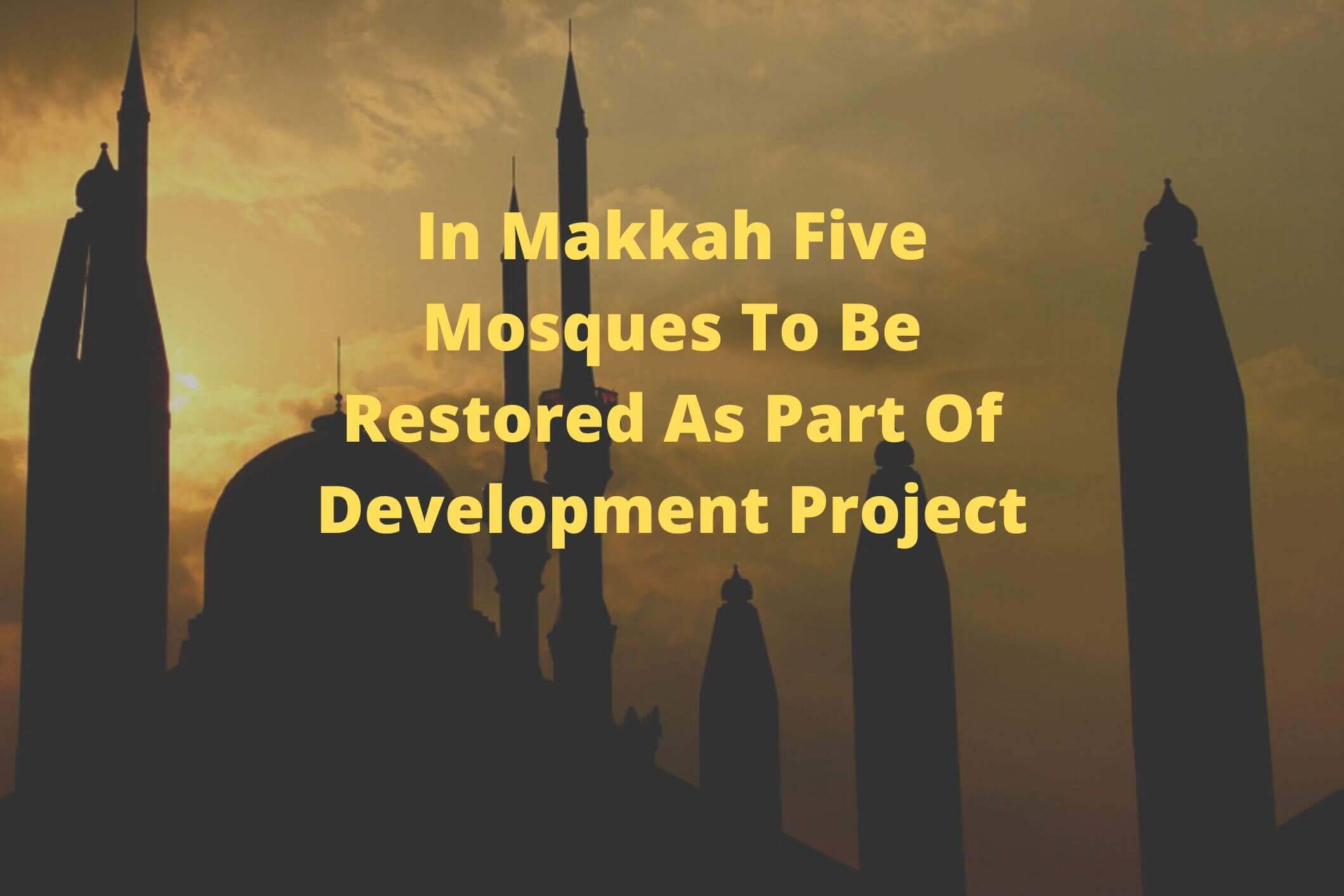In Makkah Five Mosques To Be Restored As Part Of Development Project

The second phase of the Prince Mohammed bin Salman
Project for the Development of Historical Mosques will include
the restoration of five mosques in the Makkah region,
according to the Saudi Press Agency on Sunday.
The mosques’ architecture has been impacted by the changing
climate throughout the centuries, and this initiative intends
to safeguard and rehabilitate them so that they can last for many more years.
The second phase of the Makkah development project begins with
the Al-Baiah Mosque, which was constructed by the Abbasid Caliph
Abu Jafar Al-Mansour is located close to Jamarat Al-Aqaba in Mina.
The mosque will maintain its current size and capacity of 68 worshippers
after the refurbishment is complete, with a total space of 457.56 square meters.
Two of the five mosques are located in the Jeddah governorate:
the Abu Inbeh Mosque in Harat Al-Sham and the Al-Khadr
Mosque in the Al-Balad area, both on Al-Dhahab Street.
In Makkah Five Mosques To Be Restored
The Abu Inbeh Mosque dates back over a thousand years
and occupies a space of 339.98 square meters.
The proposed renovations will increase the size to 335.31 square meters,
with enough room for 357 worshippers.
Approximately 66 kilometers from the Grand Mosque in
Makkah is the Al-Khadr Mosque, which dates back to
the early Islamic era (around the seventh century).
Once completed, the renovations will bring the square footage
up to 355.09 m2, allowing for seating for 355 worshippers.
According to tradition, the Prophet Muhammad visited the Al-Fath Mosque
in the governorate of Al-Jamoum the year he captured Makkah.
The current space can only accommodate 218 people for worship,
but with the planned expansion to 553.50 square meters,
that number should rise to 333.
More than 300 years old, the Al-Jubail Mosque will have a remodeled area of
310 square meters as part of the project. It will still be able to hold 45 worshipers.
The second stage of the development project, which spans the entire Kingdom,
will entail the construction of 30 mosques.
The project’s goals are to raise awareness of Saudi Arabia’s cultural heritage,
rehabilitate old mosques for religious purposes, protect the architectural integrity of historic mosques,
and elevate the cultural and religious significance of these buildings.
